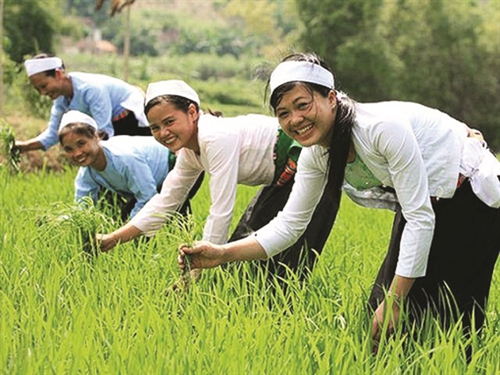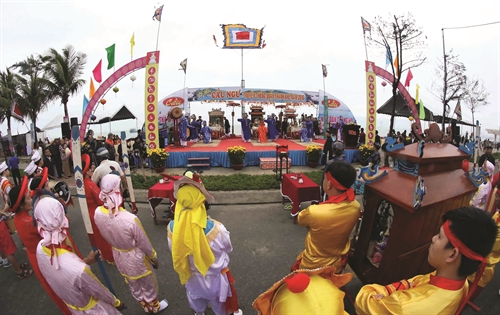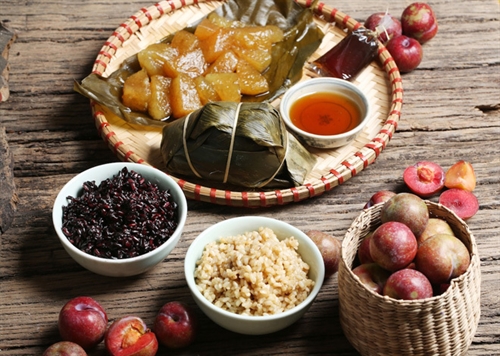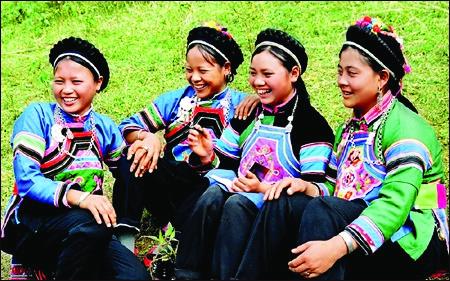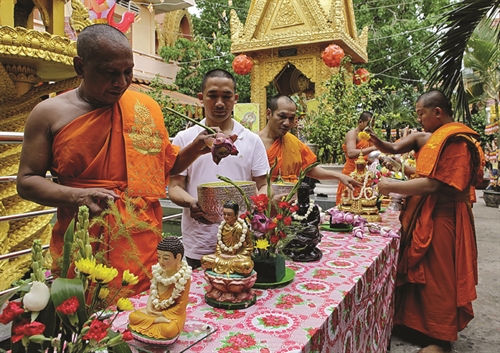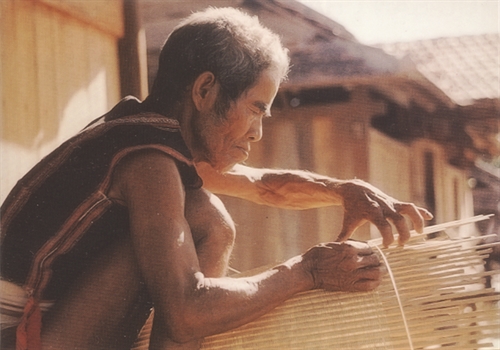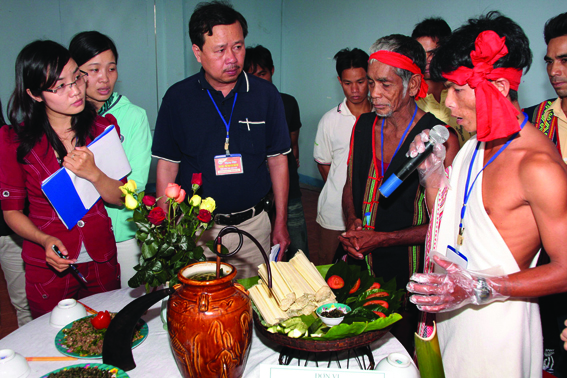Ta Thi Tam
Ethnology Institute
The Nung, a Tay-Thai language group living in the northeastern region, has a special ceremony called cha le pit chia which is held exclusively for a child predestined to be an outstanding student.
Cha le pit chia, which means students paying tribute to gods and ancestors, is originated from the Nung’s belief that every person was born with his or her own destiny and no one can change this. A smart child with a learning ability is believed to have a destiny of an intellectual bestowed by the god of heaven and his or her name has been listed in heaven. When a child is born, his or her parents give his or her date and time of birth to a fortune teller who will foresee if the child has such a fate. If the fortune teller’s calculation shows that the child is named in the list of students in heaven, this kid is believed to have a learning destiny and is entitled to celebrate cha le pit chia. This ceremony must be held during a child’s schooling age of between seven and eighteen. The ceremony is believed to be worthless if it is held before or after this period.
Cha le pit chia must be conducted by a prestigious shaman who takes charge of religious rituals in the Nung community. Knowing that their child has a learning destiny, the parents must visit the shaman in person, bringing some offerings, including a bottle of rice wine and some cakes, to invite him to conduct cha le pit chia for the child. The shaman will cast lots to choose a good date for the ceremony. After the date is fixed, the family prepares offerings for the ceremony which include a pig, a rooster with a large red comb, four cockerels, a duck, sticky rice, rice wine and votive papers.
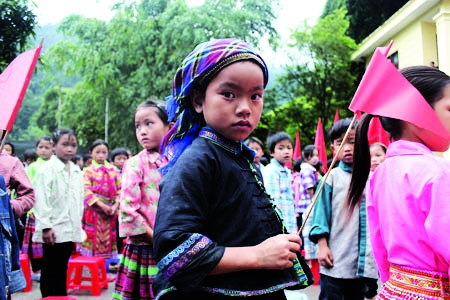 |
| Nung little girl in Hoang Su Phi district, Ha Giang province goes to the school in traditional costume __Photo: Internet |
Early morning of the day of the ceremony, relatives, friends and neighbors gather to help the family make offerings, cooking sticky rice, making banh day (pair of flat round sticky rice cakes wrapped in banana leaves), boiling chicken and duck and making paper flowers. The pig is kept alive as the sacrifice and will be killed during the ceremony. Then two bowls of rice are placed on a tray for sticking incenses. The boiled rooster, sticky rice, cakes, chicken and duck meat and fruits are placed on different trays. Particularly, a tray dedicated to the spirit of the child contains candies, a dish of sticky rice stuck with paper flowers, and paper clothes. Offerings of the ceremony also include vegetarian food such as banh khao (patty made of smashed sticky rice), parched rice, banh chung (square sticky rice without filling) and che (sweet desert soup made of bean). The vegetarian food is offered to Buddha who is worshiped by every Nung family to win his protection.
Another important offering is votive papers in various shapes, which include a two-roof house, two four-roof houses, 34 dummies (symbolizing the teacher, his assistants and students), horses, flags, a bookcase, notebooks, pens, a table and chairs, a tea set, etc. When all the offerings are readily placed on mats on the floor while the pig is tied in the middle of the yard, the shaman starts the ceremony during which the child, in new clothes, must sit on his or her knees. The shaman’s prayer is divided into three parts. In the first part, he asks for permission from the god of heaven, the god of earth, and the family’s ancestors to conduct cha le pit chia for the child and invite them to the ceremony. The shaman prays until getting the gods’ approval only at that time can the pig be sacrificed. Having its innards removed, the whole pig is placed on a tray, around which are placed nine bowls, nine pairs of chopsticks and nine cups. In the second part dedicated to mother Sinh, the foremother of the Nung, the shaman invites her to check if the offered food is good. If yes, the shaman asks the child to kowtow in front of the offering tray and pour wine into the cups while his parents burn the votive houses. The shaman then recites prayers, praising mother Sinh’s merits and pleading for her support for the child’s successful learning. Finally, the shaman invites mother Sinh and the family’s ancestors to enjoy the offered food. In the last part, the shaman asks for the gods’ bestowal of the offerings in the following order of priority: the child; the shaman; the child’s parents and grandparents; relatives, neighbors and friends of the family; builders of the family’s home; banh day makers; and young villagers slaughtering the pig.
After the ceremony, to thank the shaman, the family gives him the head, a front leg and some innards of the pig, chicken meat, sticky rice and banh day. The shaman also becomes the godfather of the child who is supposed to visit him every lunar new year festival. The child also has to give a helping hand whenever his godfather’s family has an event such as a wedding, a funeral or a death anniversary.-
